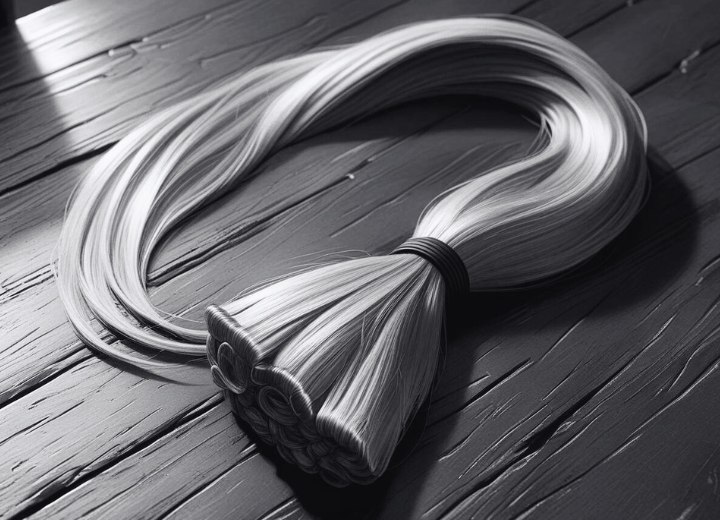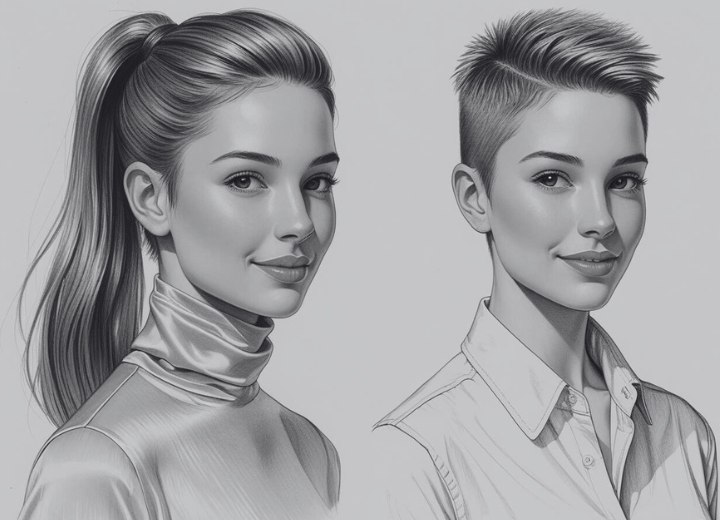How To Store a Cut Ponytail

A: Making a dramatic hair change is a big moment, and it's completely understandable that you'd want to preserve your ponytail as a memento of this transition. Many people who take the plunge from long to short hair have the same impulse, but most don't realize that once hair is cut from the scalp, it requires special care to maintain its appearance over time.
1. Preparing Your Hair Before the Cut
The foundation of successful hair preservation starts before the scissors even touch your locks. Your hair should be in the best possible condition when it's cut, which means planning ahead for your big chop.
Start by washing your hair within 24 hours of the cut, preferably with a clarifying shampoo. This removes product buildup, environmental pollutants, or excess oils that could cause the hair to become rancid or attract pests during storage. Follow up with a deep conditioning treatment to ensure the cuticles are smooth and well-moisturized.
2. The Cutting and Initial Handling Process
When you're ready for the actual cut, let your hairdresser know in advance that you want to preserve the ponytail so he or she can plan the cutting accordingly. Most stylists will secure the hair in a tight ponytail or braid before making the cut, which helps keep all the strands together and aligned in the same direction.
The positioning of where the ponytail is secured matters more than you might think. The elastic should be placed well below where the actual cut will be made, giving you plenty of length to work with for securing the cut end later.
Once the ponytail is cut, resist the urge to immediately handle it extensively. The cut end will be somewhat vulnerable, and excessive manipulation can cause the hair to begin separating or becoming disheveled. Instead, focus on immediately securing that cut end to maintain the ponytail's integrity.

This step is often overlooked but is critical for long-term preservation. The cut end of your ponytail needs to be sealed to prevent the hair from gradually working loose over time.
The most common and reliable approach is to use a small amount of clear-drying craft glue or even clear nail polish. Dip just the very tip of the cut end into the adhesive, making sure to coat all the strands evenly. Then lay the ponytail flat on a clean surface and allow the glue to dry completely. This creates a solid seal that keeps all the hairs in place.
Some people prefer to wrap the cut end tightly with clear tape or even dental floss before applying any adhesive for extra security. Others use a combination of methods, first wrapping with thread, then sealing with glue. The key is ensuring that every single strand is accounted for and secured.
4. Proper Storage Techniques
Storage is where many well-intentioned hair preservation efforts go wrong. Your ponytail needs to be protected from several environmental factors that can cause deterioration over time, including moisture, light, dust, insects, and temperature fluctuations.
An airtight container is absolutely essential. This could be a sealed plastic storage bag, a vacuum-sealed pouch, or a rigid container with a tight-fitting lid. The container should be large enough that the ponytail doesn't have to be bent or compressed, as this can cause permanent kinks.
Before sealing the container, consider adding a small packet of silica gel to absorb any residual moisture. Moisture is one of hair's biggest enemies in storage, as it can lead to mold or a musty odor that's nearly impossible to eliminate.
The storage location is equally important. Choose a cool, dry, dark place with stable temperatures. Avoid attics, basements, or anywhere that experiences significant temperature swings or humidity. A bedroom closet shelf works well.

It's important to have realistic expectations about how your preserved ponytail will age. Even with perfect care, natural hair will undergo some changes over the years. The color may fade slightly, especially if the hair was chemically processed or if there's any light exposure. The texture might become somewhat drier or less flexible than when it was first cut. These changes are normal and don't mean your preservation efforts have failed.
With proper preparation, careful handling, and appropriate storage, your ponytail can remain a beautiful and meaningful keepsake for many years to come. The effort you put into preserving it properly will ensure that this symbol of your personal transformation continues to look as special as the moment you decided to make that big hair change.
©Hairfinder.com
See also:
How to cut hair
How to put your hair in a ponytail
How should I cut my long hair off when I want to donate it?